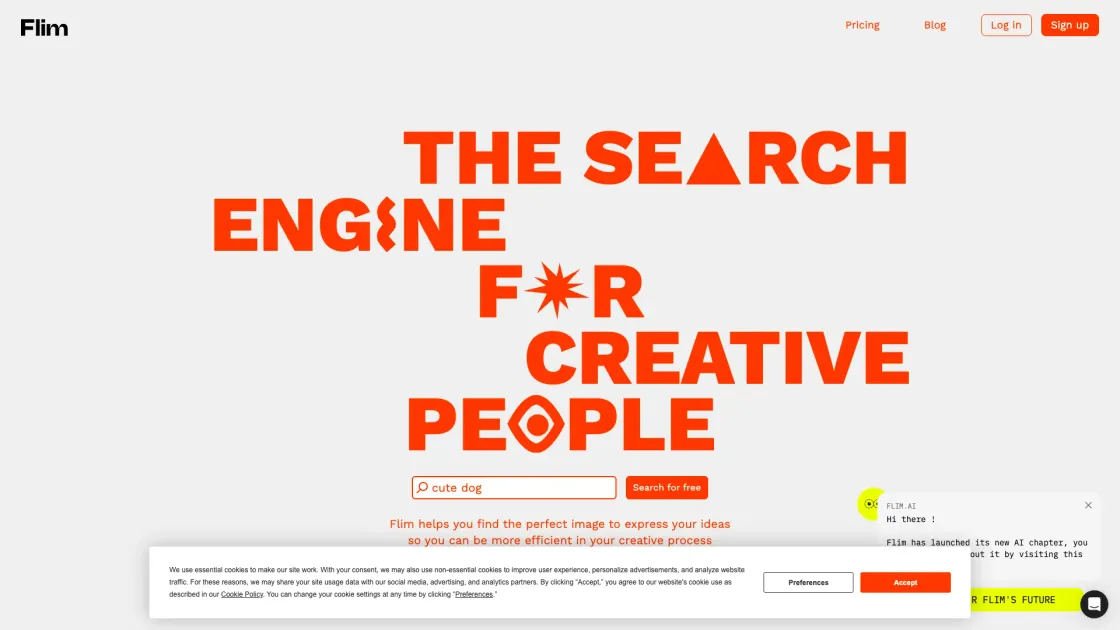Flim Review: An AI-Powered Film Still Search Engine for Visual Storytelling
Flim is a robust AI filmmaking tool aimed at directors, cinematographers, storyboard artists, and anyone involved in visual creative processes. As someone who works with visual development, I find Flim stands out by transforming the way professionals source high-quality visuals for moodboards, pitch decks, and reference collections.
The main appeal is its enormous library, featuring over 1.5 million curated screengrabs from films, TV shows, music videos, and commercials. Flim integrates cutting-edge AI to analyze visual elements—faces, style, atmosphere, dominant colors, frame size, and more—so your search always yields relevant results. This dramatically speeds up pre-production research and reference gathering compared to manual methods or generic image sites.
Key Features and AI Filmmaking Applications
- AI-Powered Visual Search: The search engine lets you target precise moods, aesthetics, themes, and shot types using advanced AI similarity analysis. If you’re building a visual language for a film or ad, it’s easy to filter by emotions, atmosphere, or even specific facial expressions.
- Color and Era Filters: Flim’s color analysis tool pulls dominant palettes from scenes and allows searching by color—ideal for designers or DPs honing a film’s look. Era filters let you browse by decade or style, saving hours compared to manual archives.
- Frame Size Selector: Search by shot type, from long shots to extreme close-ups. This is hugely helpful for storyboarding, camera planning, or referencing classic cinematography techniques.
- Moodboard and Collection Tools: Users can create, download, and collaborate on visual collections—the perfect workflow for directors working with designers or agencies. Teams can organize references and share them easily.
- Safe Search Filtering: An essential for education and professional settings, Flim includes a safe search that hides explicit or violent content.
- Content Diversity and Weekly Updates: The database is updated every week with new stills, making it one of the most comprehensive visual reference platforms for film and media.
What I Like About Flim
- Extremely fast and accurate visual search powered by AI.
- Expansive, curated database—film, TV, commercials, and music videos all in one place.
- Highly specific filtering saves time and improves creative outcomes.
- Easy moodboard creation and sharing enhances team workflow.
Pros & Cons of Flim
- Pros:
- Unmatched visual search precision for filmmakers.
- Large, frequently-updated catalog of high-resolution stills.
- Efficient team collaboration features.
- Excellent color and mood filtering tools.
- The free tier significantly limits downloads per day.
- No AI video generation—focus is on stills, not moving images.
- Pricing may be high for solo users or hobbyists.
- Lacks integration with NLEs or production software.
Flim FAQ
Who is Flim for?
Flim is perfect for directors, filmmakers, storyboard artists, film students, and anyone developing creative briefs or visual reference boards.
How does the AI search work in Flim?
Flim's AI analyzes film stills for subject, mood, color, shot type, and context, giving highly relevant recommendations and similar frames for any search.
What formats are supported for downloads?
Depending on your subscription, you can download images up to 4K resolution, with unlimited downloads for paid users.
How does Flim compare to other tools?
Unlike basic stock websites or databases like [ShotDeck](/tool/shotdeck), Flim offers AI-driven contextual search, more advanced filtering, and a broader content range—including TV and commercials, not just film.
